Experience Tranquility and Adventure: The Ultimate Mount Tai Mu Travel Itinerary
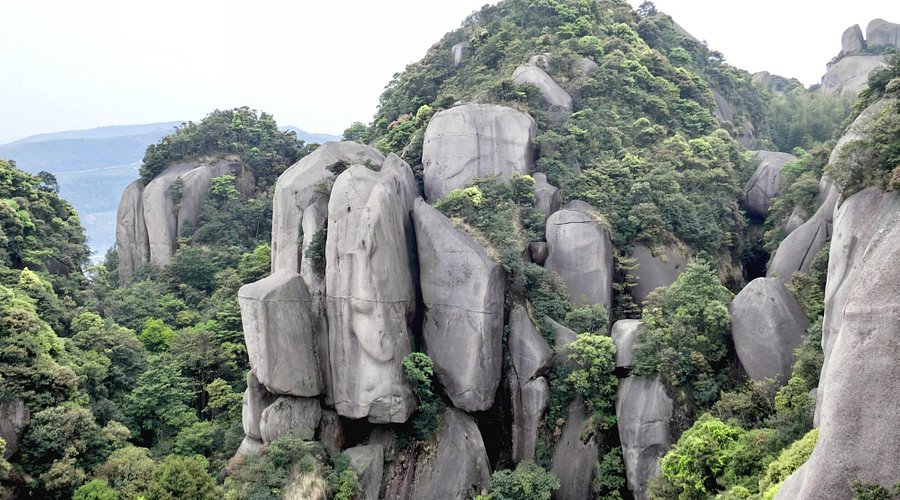
An Essential Guide to Visiting Mount Tai Mu
Nestled amidst the breathtaking landscapes of Shandong province, Mount Tai Mu (太姥山) stands as a majestic testament to China’s rich cultural heritage and natural beauty. Revered as one of the Five Sacred Mountains, this iconic peak has attracted pilgrims, adventurers, and nature lovers for centuries. With its towering granite cliffs, lush greenery, and an array of ancient temples, Mount Tai Mu offers visitors an unforgettable experience that intertwines spirituality and stunning vistas.
As you embark on your journey to this sacred site, prepare to be captivated by the dramatic scenery and the profound sense of history that permeates the air. The mountain is not just a physical challenge but a pilgrimage that has been undertaken by emperors and commoners alike, each seeking enlightenment and a connection to the divine. Whether you choose to ascend the over 6,000 stone steps that wind their way to the summit or opt for a leisurely cable car ride, the views along the way are nothing short of spectacular.
From the remarkable architecture of the Dai Temple complex to the serene beauty of the surrounding landscapes, every corner of Mount Tai Mu reveals a story waiting to be discovered. As you traverse this hallowed ground, you will find a unique blend of natural wonder and historical significance, making your visit a truly enriching experience. Prepare to immerse yourself in the spirit of one of China’s most revered mountains and uncover the secrets that have drawn countless souls to its heights.
In This Guide
- An Essential Guide to Visiting Mount Tai Mu
- The Rich History and Legends of Mount Tai Mu
- Main Highlights: What You Absolutely Can’t Miss
- Planning Your Visit: A Practical Guide
- Tickets: Prices, Booking, and Tips
- How to Get There: A Complete Transportation Guide
- Local Cuisine and Accommodation Nearby
- Frequently Asked Questions
- Final Thoughts on Your Trip
The Rich History and Legends of Mount Tai Mu
Mount Tai Mu, or Tai Mu Mountain, is not just a physical landmark; it is a testament to the rich tapestry of Chinese history and mythology. Situated in the Shandong province, this sacred mountain has long been revered as one of the Five Great Mountains of China, symbolizing the spiritual and cultural essence of the nation. Its significance is intertwined with centuries of tradition, pilgrimage, and legend.
The history of Mount Tai Mu dates back over 3,000 years, making it a crucial site for emperors, scholars, and religious figures. It has served as a prominent place of worship, where ancient Chinese emperors would ascend the mountain to perform rituals, seeking blessings for their reigns. The mountain’s elevation of 1,545 meters (5,069 feet) is not just a physical challenge; it represents a spiritual journey. Pilgrims often traverse the more than 6,000 stone steps that snake up the mountain, each step echoing the devotion of those who have walked before them.
Historically, Mount Tai Mu has been home to numerous temples and monuments, including the renowned Dai Temple at the summit. This temple complex is a magnificent representation of ancient Chinese architecture and is dedicated to the worship of the Taoist deity, the God of Mount Tai. The intricate carvings, sacred inscriptions, and cultural relics found within the temple serve as a reminder of the mountain’s significance throughout Chinese dynasties.
Moreover, Mount Tai Mu is steeped in legends that enhance its mystique. One popular tale recounts the story of the mountain’s divine origins, where it is said that the goddess of Mount Tai, known as “Tai Mu,” descended from the heavens to bless the land. According to legend, she was responsible for bestowing fertility upon the earth, making the mountain a symbol of rebirth and prosperity. This narrative resonates deeply with the local culture, as many believe that climbing Mount Tai Mu can grant good fortune and longevity.
As you explore Mount Tai Mu, you’ll encounter various scenic spots that are steeped in folklore. For example, the “Sunrise Peak” is famed for its breathtaking sunrises, drawing countless visitors who wish to witness this ethereal spectacle. It is said that witnessing the sunrise from this vantage point is akin to receiving a blessing from the heavens.
In addition to its spiritual significance, Mount Tai Mu has been recognized as a UNESCO World Heritage Site, attributing to its historical and cultural importance. This designation not only protects the mountain’s natural beauty but also preserves the myriad of stories and traditions that have blossomed around it.
For international travelers, Mount Tai Mu presents an opportunity to engage with a profound aspect of Chinese heritage. Whether you choose to hike the ancient paths or take a cable car to the summit, the experience is enriched by the legends and history that envelop this magnificent mountain. As you stand atop Mount Tai Mu, gazing at the sprawling landscapes below, it becomes clear that you are partaking in a journey that transcends time, connecting you to the spirit of a nation and the countless souls who have walked this path before you.
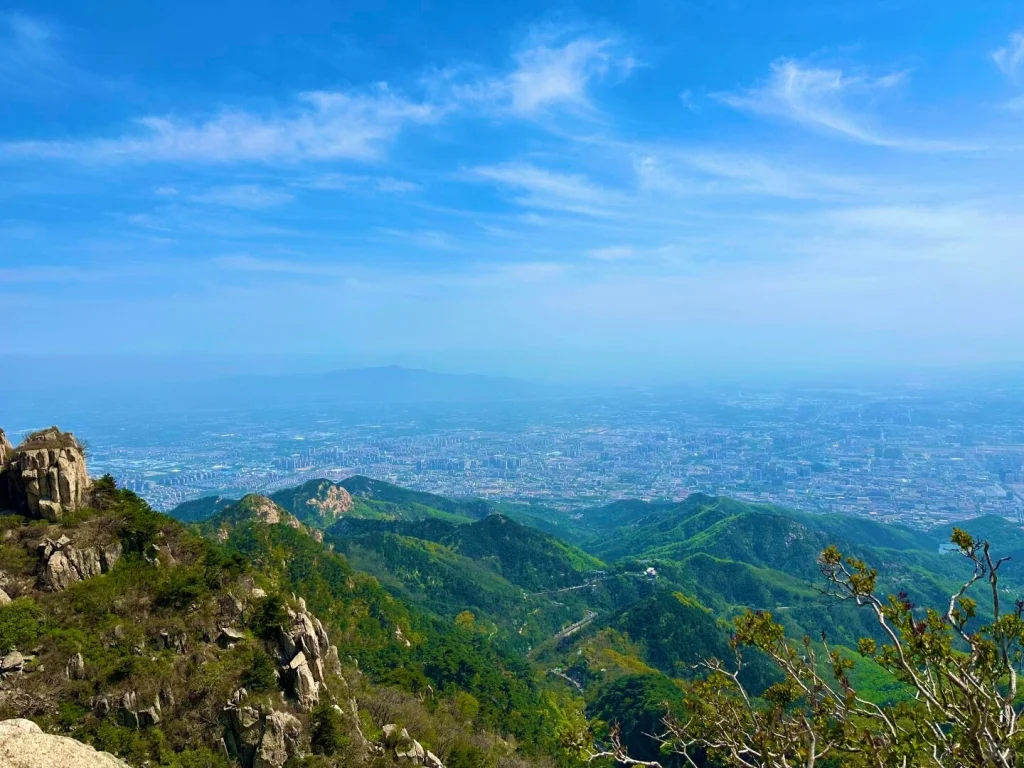
Mount Tai Mu.
Main Highlights: What You Absolutely Can’t Miss
When planning your visit to Mount Tai Mu (太姥山), there are several breathtaking highlights and experiences that you absolutely cannot miss. This sacred mountain, steeped in history and cultural significance, offers stunning natural beauty, ancient architecture, and panoramic views that promise to leave you in awe.
A Pilgrimage to the Summit
Embarking on the journey to the summit is a must for any visitor. The iconic ascent involves over 6,000 stone steps that wind through lush landscapes, rocky cliffs, and serene temples. While the climb can be challenging, it is incredibly rewarding. For those seeking a more relaxed experience, there are cable cars available that take you partway up, making the mountain accessible to travelers of varying fitness levels.
Sunrise Spectacle
If you’re an early riser, don’t miss the chance to witness the sunrise from the peak. Many hikers start their trek during the pre-dawn hours to reach the summit just in time for the first light. The breathtaking view as the sun rises over the horizon, bathing the landscape in hues of orange and pink, is a magical experience that you’ll remember for a lifetime.
The Grand Dai Temple Complex
At the summit, take time to explore the Grand Dai Temple complex, one of the most significant cultural sites on the mountain. This impressive structure is a testament to ancient Chinese architecture and spirituality. As you wander through its halls, you’ll encounter intricate carvings, historical inscriptions, and serene courtyards, all steeped in the rich history of the emperors who once worshipped here.
Scenic Views and Nature Trails
Beyond the summit, Mount Tai Mu is surrounded by a variety of scenic trails that offer stunning views of the surrounding landscape. As you hike, take in the diverse flora and fauna of the area, from ancient pine trees to vibrant wildflowers. The tranquility of the mountain creates a perfect backdrop for reflection and appreciation of nature’s beauty.
Local Culture and Festivals
Engage with the rich cultural heritage of the region by experiencing local festivals, which often take place throughout the year. These events celebrate traditional rituals and offer visitors a glimpse into the practices of the local community. From music and dance performances to food stalls featuring regional delicacies, these festivals are vibrant celebrations of life on the mountain.
Nearby Attractions
Don’t forget to explore some of the nearby attractions as well. The Bixia Temple, known for its stunning architecture and religious significance, is just a short distance away. The Taohuayu Canyon is also worth a visit for its picturesque views and hiking opportunities. Each of these sites enhances your experience of the area and provides deeper insight into the local culture.
Practical Tips
- Opening Hours: The mountain is open 24 hours, but it’s advisable to start your hike early in the morning or late in the afternoon to avoid crowds.
- What to Bring: Comfortable hiking shoes, water, snacks, and a camera are essential for your trek. If you plan to hike, dress in layers to adapt to changing temperatures.
- Respect the Environment: As a sacred site, it’s important to respect the natural surroundings and cultural landmarks during your visit.
Visiting Mount Tai Mu is not just about the physical climb; it’s a journey into the heart of Chinese culture and spirituality. Whether you’re scaling its heights, soaking in the views, or exploring ancient temples, every moment spent here is sure to be unforgettable.
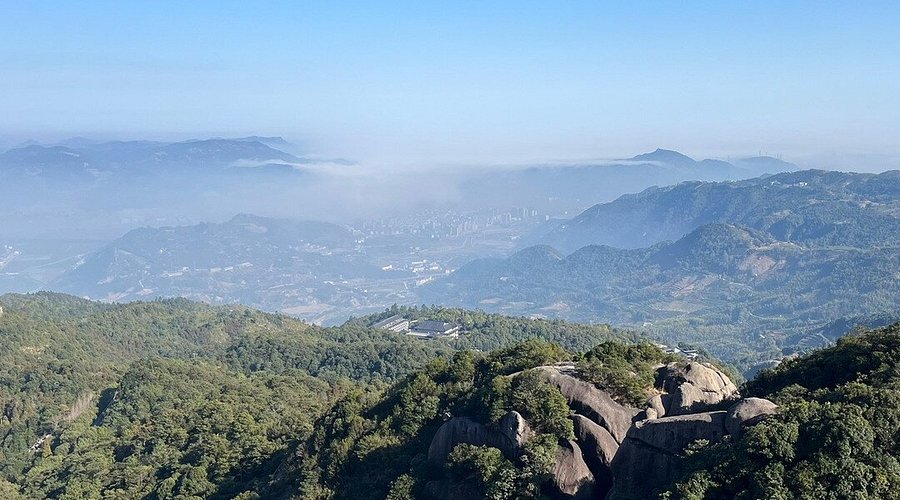
Mount Tai Mu.
Planning Your Visit: A Practical Guide
When planning your visit to Mount Tai Mu (太姥山), a UNESCO World Heritage site and one of China’s five sacred mountains, you’ll want to ensure a well-crafted itinerary that maximizes your experience. Here’s everything you need to know to make your journey both enjoyable and memorable.
Getting There
Location: Mount Tai Mu is situated in the Taishan District of Tai’an, Shandong Province, China. The mountain is accessible via several major cities in China, with Tai’an being the closest urban center.
Transportation:
– By Train: The closest train station is Tai’an Railway Station, which connects with major cities including Beijing and Jinan. High-speed trains make this journey quick and convenient.
– By Bus: Local buses frequently run from Tai’an to the mountain base. Look for routes specifically heading to Mount Tai.
– By Taxi: For a more direct approach, taxis are available and can take you straight to the entrance of the park.
Best Time to Visit
The ideal times to visit Mount Tai Mu are during the spring (April to June) and autumn (September to November) months. During these seasons, the weather is generally mild, and the scenic beauty of the mountains is at its peak. Avoid visiting during peak summer months, as the temperatures can be sweltering, and the area tends to be busier with tourists.
Entrance Hours
Mount Tai Mu is open year-round, 24 hours a day. However, for those planning to hike, it is advisable to start early in the morning, as the last entry point for visitors is at 11 PM. It’s also important to check the weather ahead of your visit, as conditions can change rapidly in mountainous areas.
Planning Your Ascent
Hiking vs. Cable Car:
– For adventurous travelers, the traditional ascent involves over 6,000 steps that wind up the mountain. This route is not only physically demanding but also offers spectacular views and a sense of accomplishment upon reaching the summit.
– Alternatively, there are cable cars available that travel part of the way up the mountain, making it accessible for visitors of all fitness levels. If time is limited or you prefer a less strenuous approach, using the cable car is a great option.
What to Bring:
– Comfortable walking shoes are essential, especially if you plan to hike.
– Water and snacks to keep your energy up during the ascent.
– Sun protection (hat, sunglasses, sunscreen) is highly recommended, as there is limited shade on the trails.
– A light jacket, as temperatures can drop significantly at higher elevations, especially in the mornings and evenings.
Attractions at the Summit
Once you reach the summit, take time to explore the historical and cultural sites, such as the grand Dai Temple, which features intricate architecture and rich history. The views from the top are breathtaking and offer an excellent opportunity for photography.
Nearby Attractions
Don’t miss the chance to explore other nearby attractions, including:
– Bixia Temple: A beautiful religious site located close to the mountain.
– Taohuayu Canyon: Known for its stunning natural beauty and hiking trails.
– Yueguan Peak: Another notable peak offering panoramic views.
Dining and Accommodation
While there are few dining options directly on the mountain, you can find a variety of restaurants in Tai’an city that serve local cuisine. For accommodation, there are plenty of hotels ranging from budget to luxury, many conveniently located near the mountain entrance.
Final Tips
- Language: While some signs and information may be available in English, learning a few basic Mandarin phrases can be helpful.
- Crowds: Be prepared for crowds, especially during weekends and holidays. Early morning visits can help you avoid the peak crowds.
- Respectful Travel: Mount Tai Mu is a place of spiritual significance; maintaining respect for local customs and the environment is essential.
With this guide in hand, you’re ready to embark on an unforgettable journey to Mount Tai Mu, where breathtaking landscapes and rich history await. Happy travels!

Mount Tai Mu.
Tickets: Prices, Booking, and Tips
When planning your visit to Mount Tai Mu (太姥山), it’s essential to be informed about ticket prices, booking options, and some handy tips to enhance your experience. Nestled in the Shandong province, this sacred mountain is not only a beautiful natural landscape but also steeped in history and cultural significance.
Ticket Prices
Entrance to Mount Tai Mu is generally affordable, with tickets priced around CNY 100 (approximately $15 USD) for adults. Discounts may be available for students and seniors, so it’s worth checking for any applicable concessions when purchasing your tickets. Additionally, if you wish to take the cable car for a quicker ascent, expect an extra fee of about CNY 100 (roughly $15 USD) for a round trip.
Booking Options
Tickets can be purchased on-site at the entrance, but to avoid long queues, especially during peak tourist seasons, consider booking in advance online through various travel platforms or the official Mount Tai Mu website. This is particularly advisable for those planning to visit during holidays or weekends when foot traffic can be heavy.
Tips for Your Visit
-
Timing is Key: The mountain is open from 5 AM to 11 PM, providing ample time for exploration. For a breathtaking experience, consider starting your climb early to catch the sunrise from the summit.
-
Choose Your Route: If you’re looking for a workout, the traditional route involves ascending over 6,000 steps, which can be physically demanding but rewarding. Alternatively, you can take the cable car partway up if you prefer a more leisurely approach.
-
Stay Hydrated: Bring plenty of water, especially if you plan on hiking. There are few places to refill along the trails, and staying hydrated will help you enjoy your journey.
-
Dress Appropriately: Wear comfortable shoes suited for hiking and dress in layers, as the temperature can vary greatly from the base to the summit.
-
Explore Beyond the Summit: The area is rich in historical sites, including the grand Dai Temple complex. Allow time to explore these cultural treasures, as they provide insight into the mountain’s significance in Chinese history.
-
Consider a Guided Tour: If you’re unfamiliar with the area or prefer a more structured experience, various tour operators offer packages that include transportation, meals, and guided hikes. This can be a hassle-free way to enjoy the mountain while learning more about its history and significance.
By keeping these details in mind, your visit to Mount Tai Mu will be both enjoyable and memorable. Whether you’re trekking to the summit or taking in the scenery from the cable car, this sacred site promises an unforgettable adventure.
How to Get There: A Complete Transportation Guide
Reaching Mount Tai Mu (太姥山) is an adventure in itself, as you navigate through the stunning landscapes of Shandong Province, China. With its rich cultural significance and breathtaking views, planning your journey here will enhance your experience. Below is a comprehensive guide to help you get to this majestic mountain.
Getting to Mount Tai Mu
By Air
Nearest Airports:
– Jinan Yaoqiang International Airport (TNA): The closest major airport to Mount Tai Mu is about 90 kilometers away, in the capital of Shandong Province, Jinan. This airport offers international flights as well as connections to other major cities in China.
– Qingdao Liuting International Airport (TAO): Located around 350 kilometers away, this airport provides another option but requires additional travel.
By Train
High-Speed Trains:
– From Jinan: Take a high-speed train from Jinan Railway Station to Tai’an Railway Station. The journey takes approximately 30 minutes. Trains run frequently throughout the day.
– From Beijing or Shanghai: Direct trains are also available from major cities like Beijing and Shanghai. The trip from Beijing takes about 2 hours, while from Shanghai, it may take around 5-6 hours.
Regular Trains:
– If high-speed trains are not an option, regular trains are available as well, though they take longer to reach Tai’an.
By Bus
Long-Distance Buses:
– Buses from major cities, including Jinan, Qingdao, and others in Shandong Province, frequently travel to Tai’an. The bus journey can take anywhere from 2 to 5 hours, depending on your starting point.
Local Transportation:
– Once in Tai’an, local buses and taxis are available to take you to the entrance of Mount Tai Mu.
By Car
Driving:
– If you prefer to drive, you can rent a car in Jinan or Tai’an. The drive from Jinan to Mount Tai Mu takes about 1.5 hours. Ensure you have a GPS or map app, as road signs may be primarily in Chinese.
At Mount Tai Mu
Entrance Options:
– There are two main entrances to Mount Tai Mu:
1. Pilgrim Entrance: This entrance is designed for those who wish to climb the mountain via the traditional steps. It is a rewarding but strenuous hike that offers a unique experience.
2. Tourist Entrance: For those seeking a more leisurely approach, this entrance allows visitors to take a shuttle bus followed by a funicular railway, which will bring you closer to the summit without the strenuous climb.
Operating Hours:
– Mount Tai Mu is open daily from 5:00 AM to 11:00 PM. Plan your visit accordingly to ensure you have ample time to explore the area.
Tips for Travelers
- Plan Ahead: Due to its popularity, especially during peak tourist seasons, consider booking accommodation and tickets in advance.
- Bring Essentials: Water, snacks, and sunscreen are a must, especially if you plan on hiking. Good walking shoes are also essential.
- Check the Weather: The weather can change rapidly, so it’s wise to check forecasts before your visit.
By following this transportation guide, you’ll be well-equipped to embark on your journey to Mount Tai Mu. Enjoy the breathtaking sights, rich history, and the spiritual ambiance that this sacred mountain has to offer!
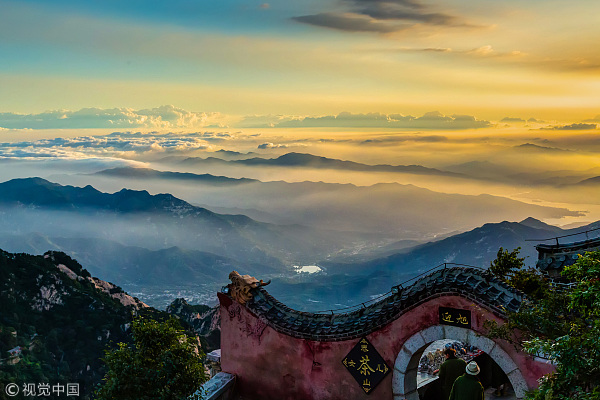
Mount Tai Mu.
Local Cuisine and Accommodation Nearby
When visiting the majestic Mount Tai Mu (太姥山), indulging in the local cuisine and finding a cozy place to stay can enhance your experience in this stunning region. Here’s a guide to some delightful dining options and accommodations nearby that will make your trip even more memorable.
Local Cuisine
1. Tai Mu Restaurant (太姥山餐厅)
Located just a short drive from the mountain entrance, Tai Mu Restaurant is renowned for its authentic Shandong cuisine. Here, you can savor dishes made from locally sourced ingredients, such as sweet and sour carp and braised chicken with mushrooms. The restaurant’s warm atmosphere and friendly service make it a favorite among travelers.
2. Bixia Temple Vegetarian Restaurant (碧霞祠素食馆)
For those seeking a more spiritual dining experience, this vegetarian restaurant near the Bixia Temple offers an array of delicious meat-free dishes. From stir-fried seasonal greens to tofu hot pot, the menu is both nutritious and satisfying, ideal for recharging after a day of hiking.
3. Yuhuang Pavilion Dining Hall (玉皇阁餐厅)
Perched on a hill with breathtaking views of Mount Tai, this dining hall specializes in local snacks and desserts. Don’t miss the chance to try Tai’an pancakes and sweet rice dumplings, which are perfect for an afternoon treat. The scenic setting is delightful, especially during sunset.
Accommodation
1. Tai Mu Hotel (太姥山酒店)
Just a stone’s throw from the mountain, Tai Mu Hotel is a comfortable choice for travelers looking to rest after a day of exploration. With modern amenities and spacious rooms, the hotel also features a restaurant that serves breakfast and local dishes. The staff is known for their hospitality, making you feel at home.
2. Bixia Temple Inn (碧霞祠客栈)
If you’re looking for a unique experience, consider staying at this quaint inn near Bixia Temple. The rooms are elegantly decorated with traditional Chinese furnishings, providing a serene environment. The inn also offers guided tours to the temple and nearby attractions, enriching your stay.
3. Grand Tai Shan Resort (泰山大酒店)
For those seeking luxury, the Grand Tai Shan Resort offers upscale accommodations with stunning mountain views. The resort features an on-site spa, fitness center, and gourmet dining options. Relax in one of their elegantly appointed rooms after a long day of hiking, and enjoy a cocktail on the terrace as you soak in the view.
Whether you’re indulging in local delicacies or resting in comfortable lodgings, the area around Mount Tai Mu has much to offer. Enjoy your culinary and cultural journey!
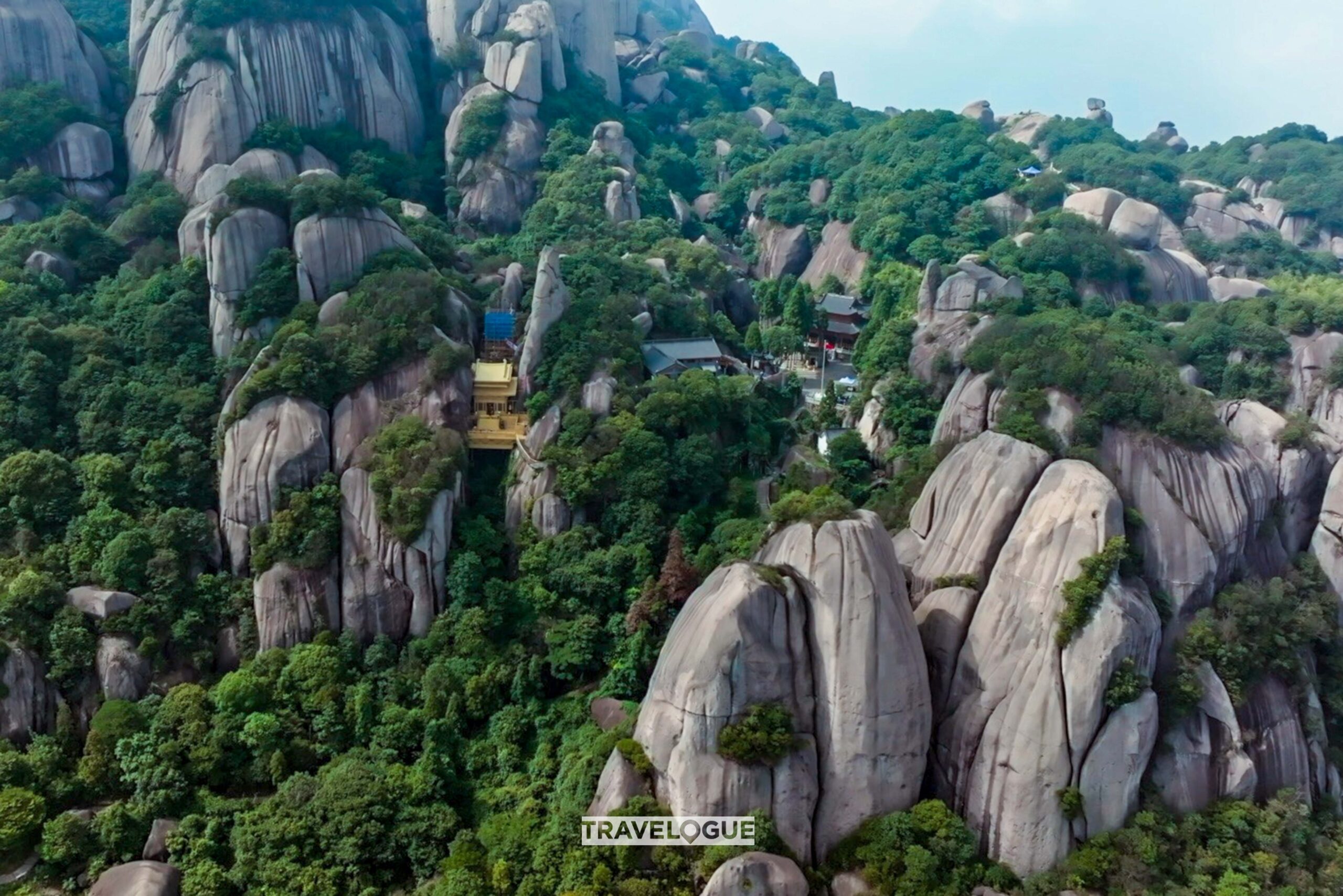
Mount Tai Mu.
Frequently Asked Questions
Frequently Asked Questions for Mount Tai Mu
1. What is the best time to visit Mount Tai Mu?
The ideal time to visit Mount Tai Mu is during the spring (April to June) and fall (September to November) when the weather is mild and the scenery is particularly beautiful. Summers can be hot and crowded, while winters may bring snow, making certain paths inaccessible.
2. How do I get to Mount Tai Mu?
Mount Tai Mu is located in Tai’an, Shandong Province, China. The nearest major city is Jinan, which has a high-speed train station. From Jinan, you can take a bullet train to Tai’an, followed by a taxi or bus to the mountain entrance. Many visitors also opt for guided tours that include transportation.
3. Are there cable cars available for the ascent?
Yes, there are cable cars available that transport visitors part of the way up Mount Tai Mu. This is particularly beneficial for those who may not want to tackle the entire hike or prefer a more leisurely ascent. However, to fully appreciate the mountain, many travelers still choose to hike portions of the route.
4. What should I wear and bring for my hike?
Wear comfortable, sturdy shoes suitable for hiking, and dress in layers to accommodate the changing temperatures as you ascend. It’s also wise to bring water, snacks, sunscreen, and a camera to capture the stunning views. A walking stick can be helpful for those tackling the steps.
5. Are there rest areas and facilities along the trail?
Yes, there are several rest areas, temples, and scenic spots along the trail where you can take breaks and enjoy the scenery. Facilities such as restrooms and food vendors are also available at various points, especially near the main entrances and popular viewing areas.
6. Is it necessary to hire a guide for the hike?
While it’s not mandatory to hire a guide, many travelers find it beneficial, especially if they want to learn about the cultural and historical significance of the sites along the way. A guide can also help navigate the best routes and avoid crowds.
7. How long does it take to climb Mount Tai Mu?
The time it takes to climb Mount Tai Mu varies depending on your fitness level and the chosen route. If you opt to hike the full 6,000+ steps, it can take anywhere from 3 to 6 hours. However, with the cable car option, you can significantly reduce your hiking time.
8. Are there any cultural or religious practices to be aware of?
Mount Tai Mu is considered a sacred site in Chinese culture, often frequented by pilgrims. It’s respectful to maintain a quiet demeanor, especially near temples and during ceremonies. Visitors should also dress modestly when entering religious sites and follow any posted guidelines.
Final Thoughts on Your Trip
As your adventure at Mount Tai Mu comes to a close, take a moment to reflect on the transformative experience this sacred mountain has offered you. From the breathtaking vistas that stretch endlessly before you to the rich tapestry of history woven into every stone and temple, Mount Tai Mu is not just a destination; it’s a journey of the spirit.
Whether you ascended its famed steps in a pilgrimage of endurance or opted for the serene glide of the cable car, you have witnessed a place that has inspired emperors and travelers alike for centuries. The echoes of ancient rituals, the whispers of the wind through the pines, and the vibrant colors of the sunrise will stay with you long after you’ve departed.
As you leave, carry with you the essence of Mount Tai Mu—the resilience it embodies, the beauty it showcases, and the stories it holds. Share your tales, inspire others to embark on their own journeys, and remember that the spirit of this magnificent mountain will always beckon you back. Safe travels, and may your future adventures be just as enriching and awe-inspiring!